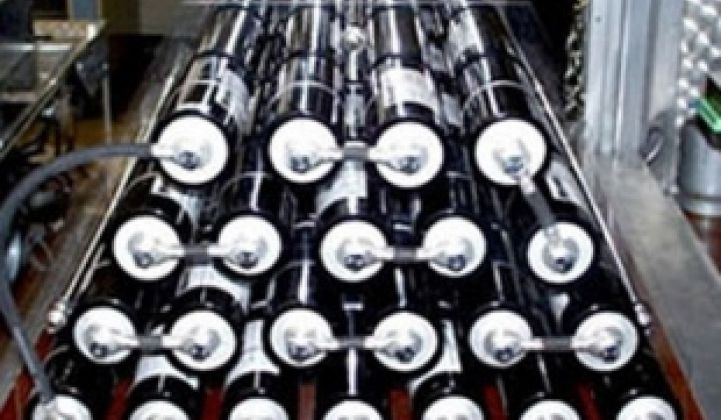EnerG2 has long promised that its super-fine carbon materials technology can deliver big improvements in ultracapacitors, lead-acid batteries and other energy storage devices. Now it’s ready to start churning out “multiple tons per month” to test the market.
That’s the capacity of EnerG2’s new factory in Albany, Oregon, according to Chris Wheaton, the startup’s chief operating and financial officer. While he didn’t name any customers, he did specify that the Seattle, Wash.-based company was targeting ultracapacitors and lead-acid batteries as its first markets, and is expected to make a customer announcement in the “next few months.”
EnerG2 bills itself as a Carbon Technology Platform (CTP) provider, building nanoscale carbon scaffolds for the anodes, cathodes and other components of energy storage devices made by others. It has raised about $12 million from investors including OVP Venture Partners and Firelake Capital, and also landed a $21.3 million Department of Energy stimulus grant in 2009 to build its plant.
The startup’s custom-built carbon structures can add significant benefits to ultracapacitors, the “flash” energy storage devices of the world, Wheaton told me in a Monday interview. Mainly, EnerG2 allows ultracaps to run at higher voltages than today’s less finely-tuned structures, he said.
Because ultracaps are more efficient at higher voltages, that translates to a 25-percent to 40-percent improvement, he said -- at little or no extra cost. EnerG2 is targeting partners in the automotive energy storage space for this application, he said, a list that could include ultracap makers like Maxwell Technologies and others.
Likewise, EnerG2’s material, added to the “lead paste” that goes into lead-acid batteries, increases their cycle life at a “tiny cost, compared to the improvement in performance it delivers,” Wheaton said. Short cycle life has been the Achilles heel of lead-acid batteries in such applications as grid storage and stop-start hybrid vehicle energy storage, with many startups trying -- and some failing -- to improve on the age-old chemistry.
The proof of all this will be in the pudding, of course. EnerG2 has plenty of competition in the energy storage materials and systems space, which offers startups an easier path to commercialization via partnerships than trying to build a battery company from scratch.
EnerG2’s role as a “high-performance” energy storage partner does lend its technology to smaller-scale applications like EVs, Wheaton said. Ultracapacitors could grow to a $500 million market this year, driven largely by automotive applications. Lead-acid batteries are largely limited to microhybrid, stop-start applications today, though there’s also big opportunity in electric bikes and scooters for such potentially massive markets as China and India.
At the same time, EnerG2 is looking at partners for grid-scale energy storage, enabled by its life-extending lead-acid battery tech. Of course, grid-scale energy storage remains a market constrained by the fundamental cheapness of its alternative: power generated with cheap natural gas.
We’ve seen batteries deployed to back up key wind farms in constrained markets like Texas or islanded grids in Hawaii, to defer capital costs of beefing up stressed-out substations in Texas and West Virginia, and to manage neighborhood blackouts in Ohio -- but all of these projects struggle to compete against gas-fired power’s low price.



